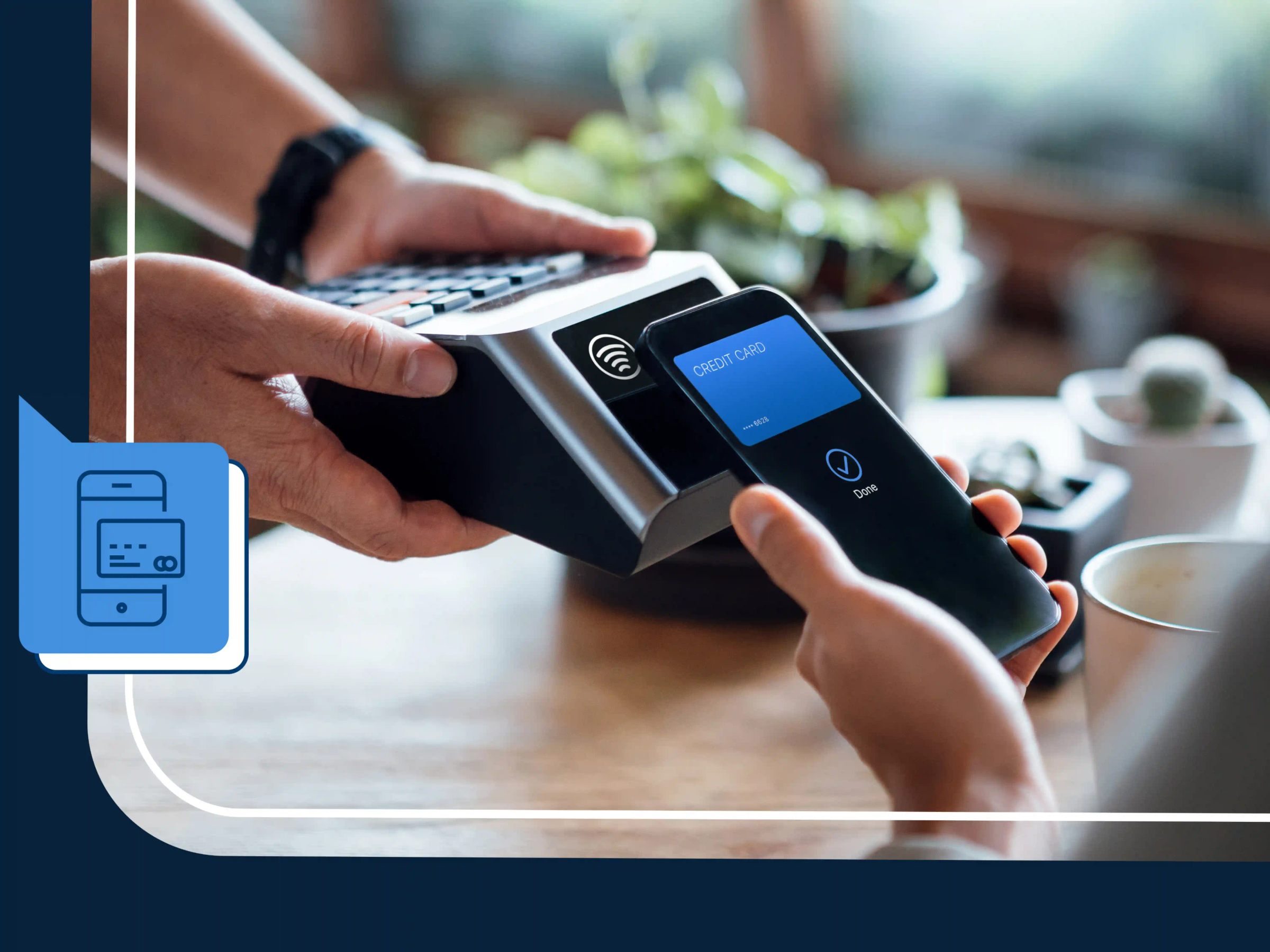Did you know that more than half of all transactions are contactless?
Digital wallets and other convenient payment methods took off during the pandemic, and their popularity is only rising. Now, offering modern payment options like tap to pay is essential for businesses to meet customer expectations.
But you’re a law firm, not a retailer. Do tap to pay and other digital payments matter? In short—YES.
Over half of legal clients prefer working with a law firm that offers digital payments— and almost one in three transactions in America are done via tap to pay.
But what is tap to pay, and how can law firms practically (and ethically) implement it?
In this article, we’ll cover the basics of contactless payments, the benefits of tap to pay technology, and how a legal payment processor can help.
What is Tap to Pay?
Tap to pay refers to a type of contactless payment technology that allows people to physically tap a card or smart device to make a payment.
This is either done via a tap to pay point of sale system or a compatible card reader.
Some of the most frequently used versions of tap to pay include:
Credit cards with the contactless symbol
Difference between contactless payments and tap to pay
Tap to pay is a form of contactless payment, but not all contactless payments are tap to pay. Tap to pay specifically involves physically tapping a device or card to make a payment using a specific radio frequency (more on that later).
For example, online payments via an app, website, or QR code are also a form of contactless payment method.
That said, in layman's terms when most people refer to “contactless payment”, they are talking about tap to pay.
How Does Tap to Pay Work?
Tap to pay uses a specialized short-range radio frequency called near-field communication (NFC) to securely connect a payment method and card terminal.
NFC works on such a specific frequency that it avoids interference and only works over a very short distance, adding a layer of payment security.
The overall tap to pay process is:
A user taps their card at the point of sale or another compatible payment terminal
The user’s payment information (card number, etc.) is encrypted and sent to the terminal
The terminal sends the encrypted information to your bank for approval
Once the payment is approved, the transaction is complete.
To accept tap to pay, you need a compatible terminal. Compatible payments and terminals will display the contactless payment symbol.

However, because the technology is so widespread, many devices come with the ability to accept NFC payments built-in. That said, there are two types of NFC devices:
Passive: Devices that can only send data. Think of a credit card, key fob, or another non-powered device.
Active: Powered devices that can both send and receive encrypted payment information. Smartphones are a good example of this.
What are the Benefits of Accepting Tap to Pay Transactions?
Now that you have a basic understanding of how tap to pay works, let’s go into the most important aspect of it: why it matters to your law firm.
In the past, offering a variety of contactless payment options at a law firm was a nice-to-have but unessential aspect of day-to-day operations. Now, the ability for clients to use contactless, tap to pay options like Apple Pay or Samsung Pay can provide several meaningful benefits for your law firm.
1. Reduced payment friction
Clients are more likely to make quick payments when they have a wide variety of options available. Payment by check or cash order is simply less convenient and adds friction to the customer experience, which can, in turn, lead to slower payments and less cash flow.
Law firms that provide convenient digital payment options get paid up to 39% faster than those that don’t. With digital wallets like Tap to Pay for Android and Cash App to Pay quickly becoming many clients' preferred payment methods, lawyers have an easy opportunity to increase cash flow.
2. Increased security
In the legal business, where data security is increasingly top of mind, it’s vital for law firms to employ the most secure payment methods available. Law firms that only accept traditional methods like checks or use manual data entry for payments increase the risk of losing clients’ payment information through human error or a cyberattack.
The popularity of tap to pay technology isn’t just in its convenience, it’s also one of the most secure payment methods out there.
Tap to pay also works in an extremely short range, meaning unless someone has physically disguised themselves as you, the chances of that information being intercepted are near zero. And every time you tap your card or smartphone to make a payment, all of your sensitive information is encrypted.
So, on the off chance someone did manage to intercept that encrypted payment information, they wouldn’t be able to use it.
Active devices have additional layers of security if needed and can ask users to confirm their identity before a transaction is processed.
3. Meet customer expectations
Many of today’s clients have a preferred way to pay for goods and services. In fact, over half of Americans use their digital wallet more than traditional payment methods.
Offering modern, frictionless payments is one way that your law firm can stand out from competitors and improve the overall client experience. If clients see only traditional payment methods available they may assume that you’ll provide an outdated experience in other ways as well.
In other words, the goal of offering tap to pay isn’t to replace your other digital lawyer payment methods but to add to them so that your clients have the most pain-free payment experience possible.
4. Reduced risk of chargebacks
If a client doesn’t understand what work you’ve done and how you’ve billed for it, you’re at risk of them initiating a chargeback. Chargebacks can be costly and create issues in maintaining IOLTA compliance.
In-person payments significantly reduce your risk since you have a chance to clear up any confusion before it becomes a problem. Legal accounting software helps further protect you by integrating with your payments and case management software to create a clear view of every transaction.
Overall, chargebacks are much easier to handle if a lawyer can provide proof of work and evidence that customers were aware of and agreed to the services. A tap-to-pay solution enables you to offer streamlined, modernized payments while reducing your chargeback risk.
Tap to Pay Methods
Numerous tap to pay methods are available to clients. Here are the two most common forms:
Contactless cards
Most new credit and debit cards support tap to pay and it’s become increasingly popular. Any card with the contactless symbol will support tap to pay. Tap to pay is popular because it combines the security of a chip-and-pin system with the speed of swiping.
Digital wallets
Digital wallets (or mobile wallets) are mobile apps that can be installed on a smartphone, smartwatch and wearables, along with other smart mobile devices. For example, Apple Pay allows users to tap to pay on their iPhone and Google Wallet does the same for Android.
Digital wallets securely store payment information, passwords, IDs, and more. They also are capable of turning your smartphone into a tap-to-pay device by leveraging NFC technology.
Elevating the Client Experience With a Modern Legal Payment Partner
Offering convenient digital payments is just one way that your law firm can meet client expectations and create a smoother experience. But with all of the ethical and legal requirements surrounding legal billing, you can’t sacrifice convenience for compliance.
With LawPay, you don’t have to. LawPay was specifically designed to handle the complexity of legal payments while offering a modern and convenient client experience. That’s why LawPay is trusted by thousands of law firms to streamline their payments so they can get paid faster and increase cash flow.
Coming soon, we’ll be updating our leading legal payment software and mobile app to accept tap to pay while maintaining IOLTA compliance, legal accounting standards, and more.
To see how LawPay can elevate the client experience and simplify payments at your law firm, schedule a demo today.
Tap to Pay FAQs
What is NFC payment technology?
NFC refers to “near-field communication” and is a very short-range radio system that allows payment devices and payment terminals to communicate with each other. When payment information is transmitted through NFC it is fully encrypted, making it extremely difficult to intercept.
Does it cost more to accept tap to pay transactions?
This depends on what payment processor you use. In general, many payment processors do not require additional charges for contactless payments outside of the typical credit card processing fees.
Does tap to pay work without internet?
Yes - tap to pay works using short-wave radio, meaning it can gather the relevant payment information without an active internet connection.
Is tap to pay risky?
In short, no. In fact, tap to pay is one of the most secure in-person payment methods. Payment information is encrypted and only works over an extremely short distance, meaning the chance for interception or fraud is lower than some other payment methods.
Is tap to pay safer than inserting or swiping a card?
Tap to pay is about equally as safe as inserting a chip and pin - both transmit encrypted payment data over a short range. Chip and pin have an added layer of security since you must enter your pin number, but tap to pay is largely considered extremely safe.
Swiping opens up the door to more risk because of things like card skimmers, which scammers use to steal payment information.
Can credit cards get skimmed with tap to pay?
It is virtually impossible to skim information from a tap to pay transaction. The short range and encryption mean that even in the off chance a bad actor intercepts the information, it won’t be usable.
About the author

Adrian Aguilera
Adrian Aguilera is a Senior Content Writer and SEO Strategist for 8am, a leading professional business platform. He covers emerging legal technology, financial wellness for law firms, the latest industry trends, and more.
